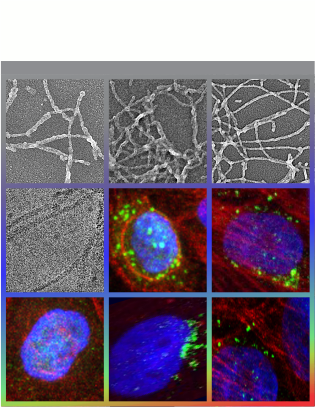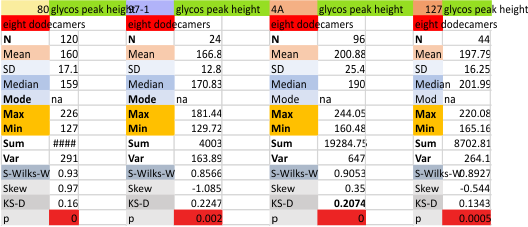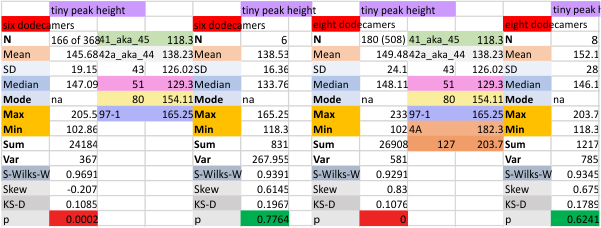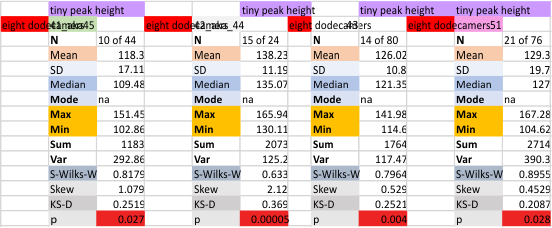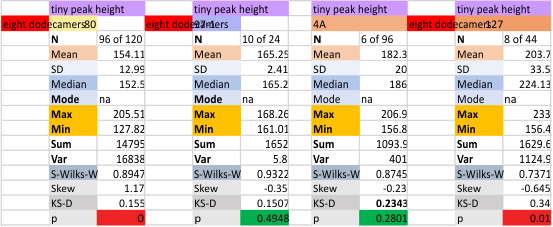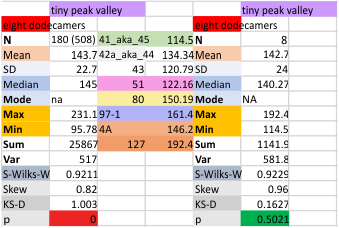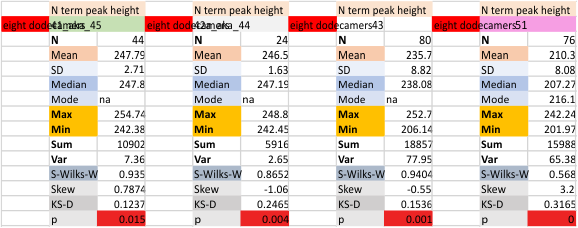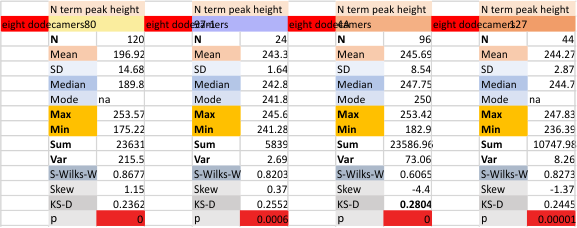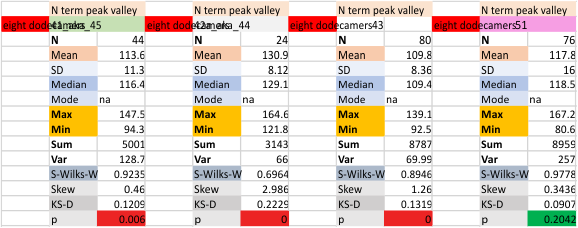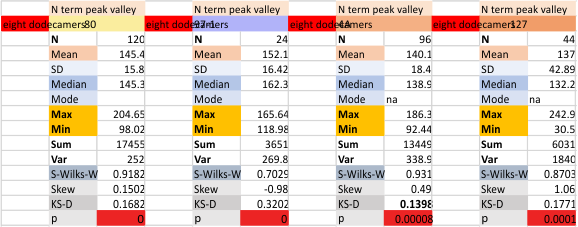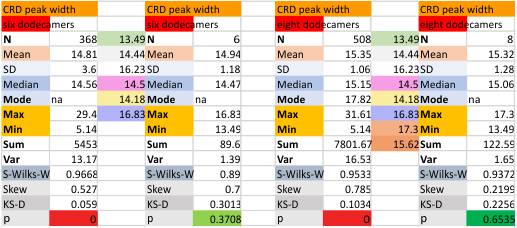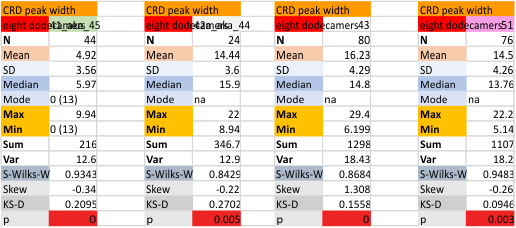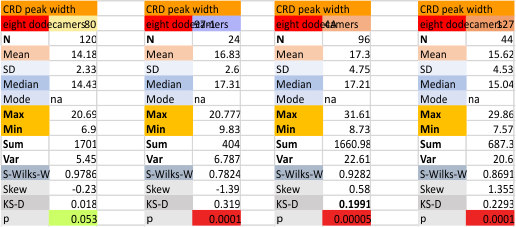Cover submission for two friends at UNC
Eight dodecamers: SP-D – peak 6 height and valley
Eight dodecamers: SP-D – peak 5 height and valley
Eight dodecamers: SP-D – peak 4 height and valley
Eight dodecamers: SP-D – glycosylation peak height and valley
Eight dodecamers: SP-D – tiny peak height and valley
Eight dodecamers: SP-D – N termini junction peak height and valley
Eight dodecamers: SP-D – N term ?x subpeak height
There is often a slight decrease in the N term peak, likely where the N term domains join the trimers at the center of the dodecamer. This is an infrequent event and its detection is also related to how one draws the plot line through the center of the image of the molecule. When the N term peak width is listed there are occasions when it interferes (reduces) the total N term peak width. The tiny change in grayscale (height and valley) of the N term peak is pretty small. I have put a ? in the title of this peak to denote its inconsistent appearance.
It is nevertheless listed here in a graphic and below, it appears in two of the eight trimers in these data.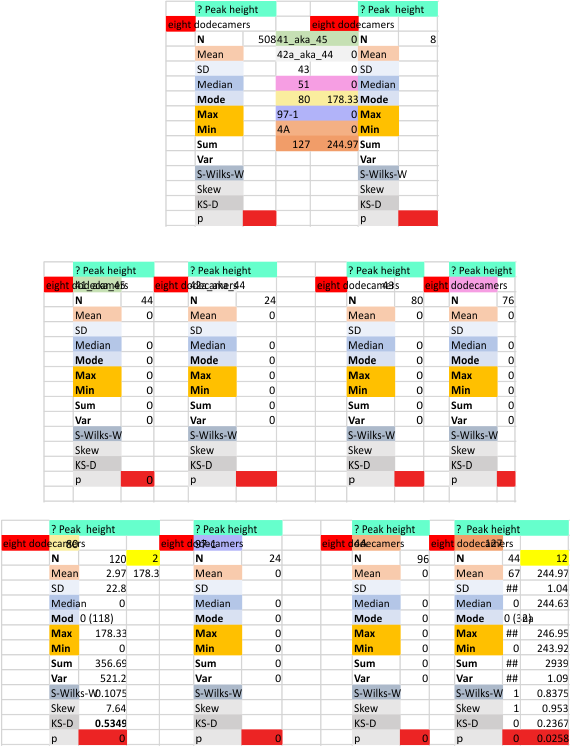
Eight dodecamers: SP-D – carbohydrate recognition domain peak width
Same MO, but since this peak appears 100% of the time (so far) there is no second column where the mean (and other parameters) is calculated excluding the missing (undetected) peak values. Difference in CRD peak width is certainly not very different from the first 6 dodecamer summary than the first 8 dodecamer summary. Some benefit is gained by using the means of each, rather than the individual trimer values.






